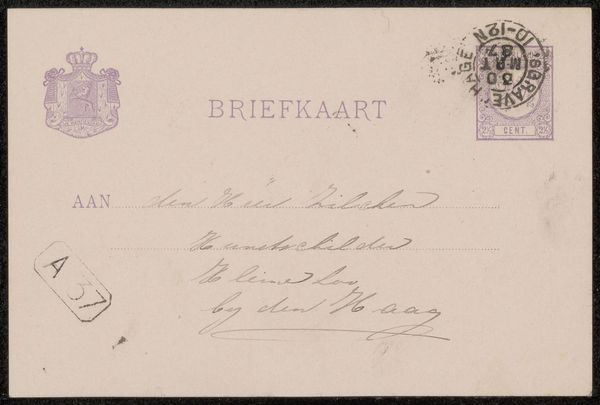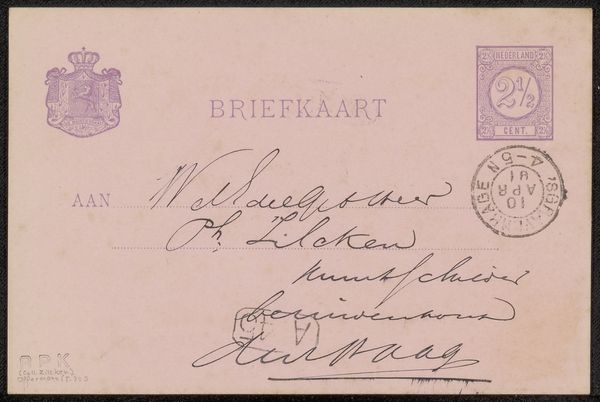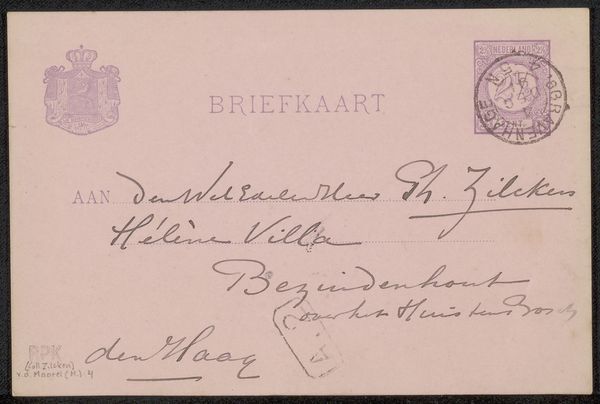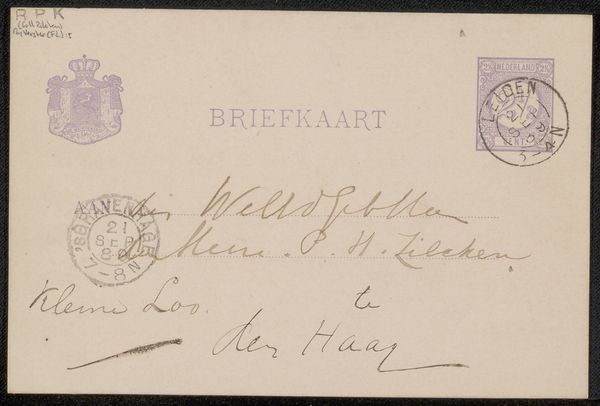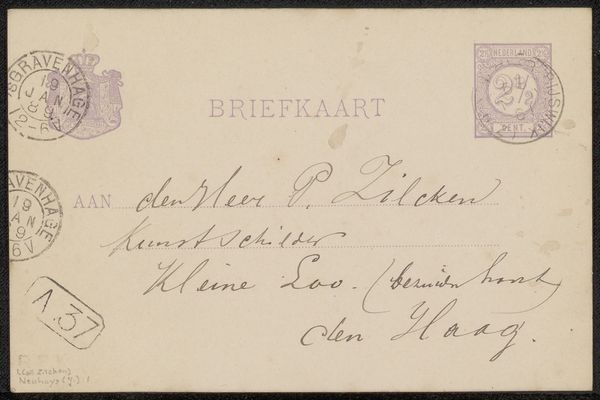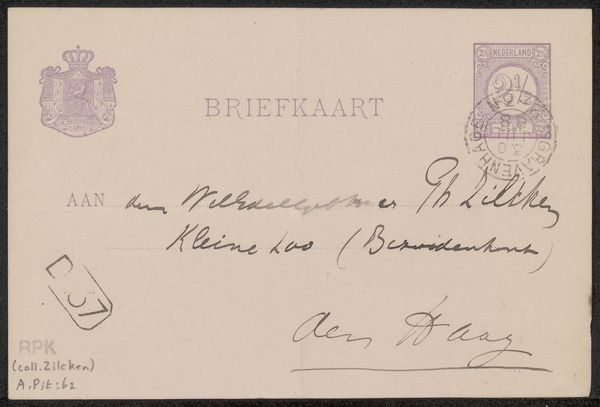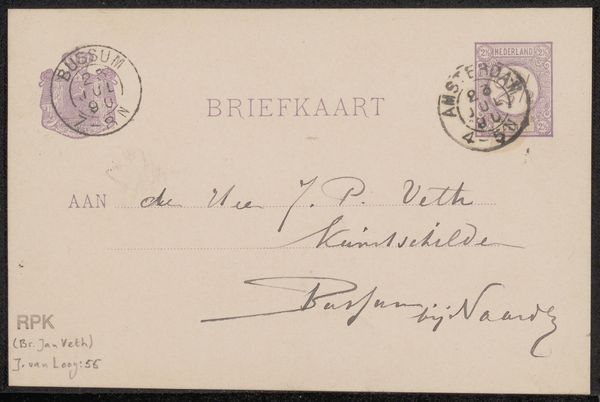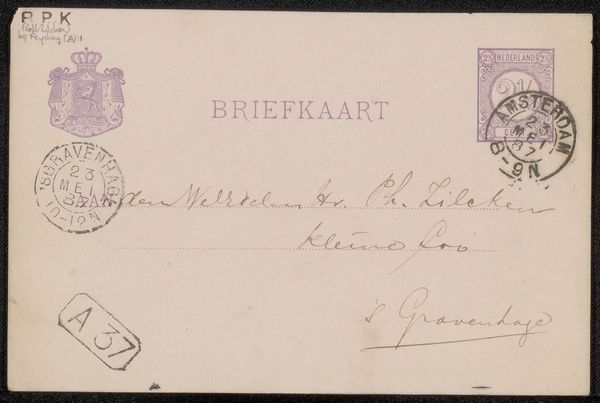
drawing, print, paper, ink, pen
#
drawing
#
hand-lettering
# print
#
pen sketch
#
hand drawn type
#
hand lettering
#
paper
#
personal sketchbook
#
ink
#
hand-drawn typeface
#
pen-ink sketch
#
pen work
#
sketchbook drawing
#
pen
#
post-impressionism
#
sketchbook art
Copyright: Rijks Museum: Open Domain
Curator: Let’s turn our attention to "Briefkaart aan Philip Zilcken," a pen and ink drawing on paper, likely created sometime between 1890 and 1899 by Arnold Paul Constant Ising. Editor: My initial impression is one of intimacy, seeing the careful looping script gives the feeling of reading something very personal and delicate. I immediately want to decipher its message; the materiality just exudes connection. Curator: Exactly! These types of personal missives offer insight into the artistic networks of the late 19th century. Zilcken, the recipient, was himself a notable artist, and the postcard format signals a level of familiarity and accessibility. It's a departure from formal letters, suggesting a different kind of artistic exchange. Editor: I'm also struck by the inherent labor in this mode of communication. Before mass-produced printing became ubiquitous, such personal letter writing, with its unique hand-lettering, was the very foundation of social and professional exchange. Each flourish of the pen required considerable effort. And this level of personal touch contrasts sharply with the impersonal nature of modern digital messaging, doesn't it? Curator: Precisely! And think about the postal systems themselves. The stamp, the postmark—these weren't just utilitarian; they were symbolic markers of state infrastructure and the circulation of ideas. They're physical artifacts of a moment in time, offering clues about the societal framework in which art was being created and shared. This example was mailed from Amsterdam in September of 1890. Editor: Seeing the various postmarks and the carefully chosen paper adds another layer for me. We can analyze these components as crucial elements that reflect the period’s resources, systems and production methods—they shaped this artist’s life and artistic output, directly. Curator: And consider the intended audience. This wasn’t meant for public consumption, yet here we are, decades later, scrutinizing its every detail. That shift in context alters its meaning. The role of institutions in preserving and exhibiting this kind of ephemera helps ensure access for all who wish to see it. Editor: Looking closer, the visual weight and flow are also part of the composition: this feels almost calligraphic, so well balanced despite its seemingly casual layout. There's art in this functionality. Curator: Absolutely. Examining the artwork's journey—from a personal correspondence to a publicly displayed artifact—reveals how meanings change over time, as social contexts shift and institutions assign new values. Editor: It’s compelling to recognize the simple labor and materials that facilitated intellectual exchange across vast artistic networks. Each small effort adds to our rich understanding of this artist and his process.
Comments
No comments
Be the first to comment and join the conversation on the ultimate creative platform.

